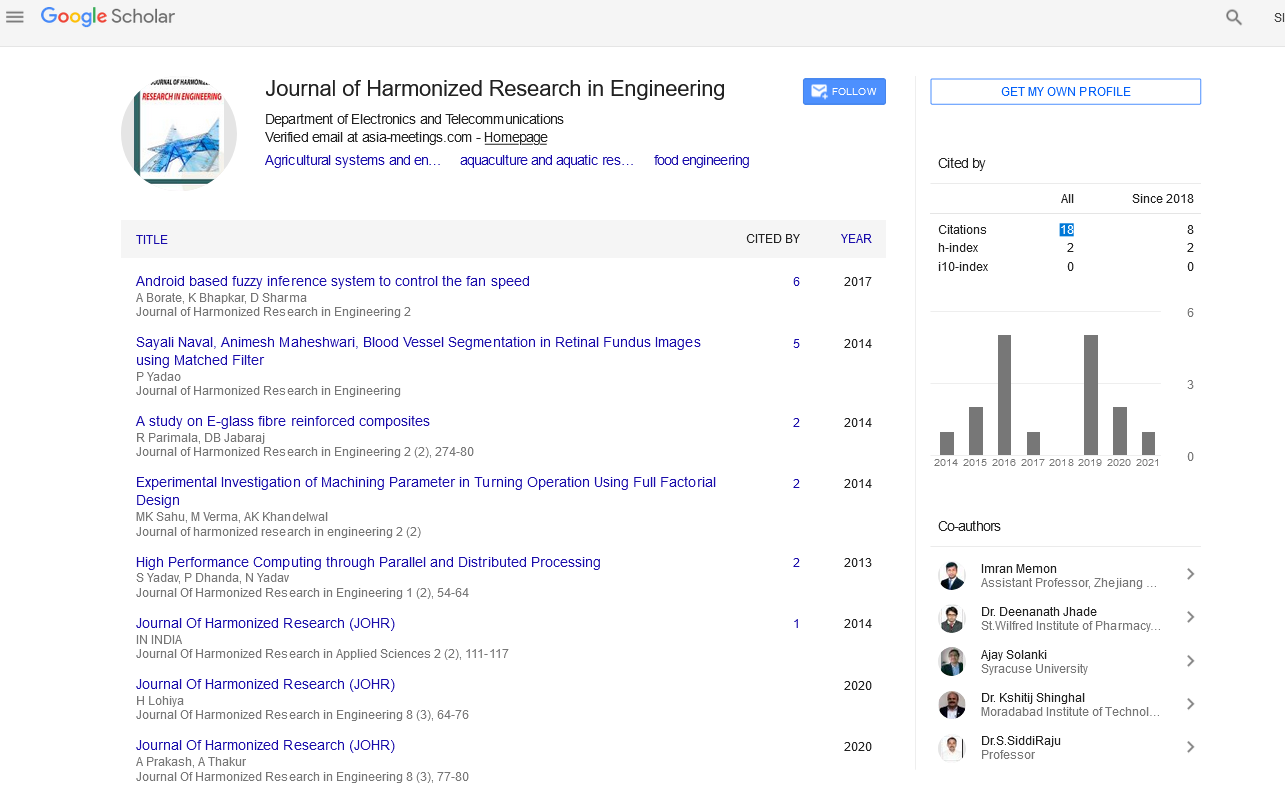Editorial - (2021) Volume 9, Issue 2
EDITORIAL NOTE ON FOOD TECHNOLOGY AND ITS APPLICATIONS
Berset Liana*Received: Dec 06, 2021
Editorial
Food technology is a science, academic, and specialized field that interprets the principles of engineering, science, and mathematics food manufacturing and operations, including the processing, production, handling, storage, conservation, control, packaging, and distribution of food. Due to its reliance on food science and a wide range of engineering disciplines such as electrical engineering, mechanical engineering, construction, chemistry, industry and agricultural engineering, food technology is considered to be an interdisciplinary and narrow discipline.
Due to the complex nature of food materials, food engineering also combines the study of specific chemical and physical concepts such as biochemistry, microbiology, food chemistry, thermodynamics, transport phenomena, rheology, and heat transfer.
Application and Practices
Refrigeration and freezing
The main objective of refrigerating and / or freezing food is to maintain the quality and safety of the food material. Refrigeration and freezing help preserve fresh foods and preserve food quality factors such as appearance, texture, taste, taste and nutritional value. In addition, freezing food slows the growth of bacteria that can be harmful to consumers.
Packaging
Food packaging technology is used to extend the shelf life of products, stabilize foods (maintain taste, appearance and quality), keep foods clean, protect and appeal to consumers. This can be achieved, for example, by packaging food in cans or bottles. Because food production produces large amounts of waste, many companies are switching to eco-friendly packaging to protect the environment and attract the attention of eco-friendly consumers. Environmentally friendly packages include plastics made from corn and potatoes, meltable biodegradable plastics and paper products, and recycled contents. While moving to environmentally friendly packages has a positive impact on the environment, many companies have other options such as reducing extra packages, acquiring and retaining customers, and demonstrating that they are environmentally friendly. We also recognize the benefits.
Energy for food processing
Energy efficiency and waste heat utilization are required to increase the sustainability of food processing. Replacing traditional energy-intensive food processes with new technologies such as thermodynamic cycles and non- thermal heating processes has the potential to reduce energy consumption, reduce production costs and improve the sustainability of food production.
Heat transfer in food processing
Heat transfer is important in the processing of almost all commercial foods and is important in maintaining the hygienic, nutritional, and sensory properties of foods. Heat transfer methods include induction, convection, and radiation.
Food Safety Management Systems
Food Safety Management System is “a systematic approach to managing food safety hazards of a company so that food can be consumed safely”. In some countries, FSMS is a legal requirement that requires all food manufacturers to use and maintain FSMS under the Hazard Analysis Critical Control Point (HACCP) principle. HACCP is a management system that addresses food safety by analyzing and managing biological, chemical and physical hazards at all stages of the food supply chain.

Google Scholar citation report
Citations : 43
Journal of Harmonized Research in Engineering received 43 citations as per google scholar report









